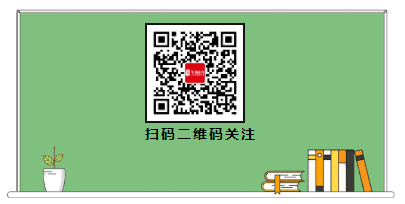华慧考博:考博英语阅读定位技巧
做阅读题时每位考生有自己的做题习惯以及做题步骤,但根据题干关键词定位是做阅读中必不可少的。一般来说,有两种情况。第一种,在文章中能找到与题干的关键词一模一样的词,这种很好定位。第二种,在文章中能找到与题干的关键词相似的词。口说无凭,举例为证!下面华慧考博老师就以2014年的医学统考真题的第二篇阅读为例,告诉考生朋友们如何去正确地进行定位:
A little information is a dangerous thing. A lot of information, if it’s inaccurate or confusing, even more so. This is a problem for anyone trying to spend or invest in an environmentally sustainable way. Investors are barraged with indexes purporting to describe companies’ eco-credentials. Some of dubious quality Green labels on consumer products are ubiquitous, but their claims are hard to verify. The confusion is evident from the New Scientist’s analysis of whether public perception of companies’ green credentials reflect reality. It shows that many companies considered “green” have done little to earn that reputation, while others do not get sufficient credit for their efforts to reduce their environmental impact. Obtaining better information is crucial, because decisions by consumers and big investors will help propel us towards a green economy.
At present, it is too easy to make unverified claims. Take disclosure of greenhouse gas emission, for example. There are voluntary schemes such as the Carbon Disclosure Project, but little scrutiny of the figures companies submit, which means investors may be misled.
Measurements can be difficult to interpret, too, like those for water use. In this case, context is crucial: a little from rain-soaked Ireland is not the same as a little drawn from the Arizona desert.
Similar problems bedevil “green” labels attached to individual products. Here, the computer equipment rating system developed by the Green Electronics Council shows the way forward. Its criteria come from the IEEE, the world’s leading, professional association for technology.
Other schemes, such as the “sustainability index” planned by US retail giant Walmart, are broader. Devising rigorous standard for a large number of different types of product will be tough, placing a huge burden on the academic-led consortium that is doing the underlying scientific work.
Our investigation also reveals that many companies choose not to disclose data. Some will want to keep it that way. This is why we need legal requirements for full disclosure of environmental information, with the clear message that the polluter will eventually be required to pay. Then market forces will drive companies to clean up their acts.
Let’s hope we can rise to this challenge. Before we can have a green economy we need a green information economy—and it’s the quality of information, as well as its quantity, that will count.
1. “The confusion” in the first paragraph refers to ______.
A. where to spend or invest in a sustainable way
B. an array of consumer products to choose
C. a fog of unreliable green information
D. little information on eco-credibility
2. From the New Scientist’s analysis it can be inferred that in many cases ______.
A. eco-credibility is abused
B. a green economy is crucial
C. an environment impact is lessened
D. green credentials promote green economy
3. From unverified claims to difficult measurements and then to individual products, the author suggests that ______.
A. eco-credibility is a game between scientists and manufactures
B. neither scientists nor manufactures are honest
C. it is vital to build a green economy
D. better information is critical
4. To address the issue, the author is crying for ______.
A. transparent corporate management
B. establishing sustainability indexes
C. tough academic-led surveillance
D. strict legal weapon
5. Which of the following can be the best inference from the last paragraph?
A.The toughest challenge is the best opportunity.
B. It is time for another green revolution.
C. Information should be free at all.
D. No quantity, no quality.
第一题可根据关键词“The confusion”定位,我们知道限定词 The 一般是表示前文中所提到过的事物,所以第一题的定位是The confusion的前面一句:Some of dubious quality Green labels on consumer products are ubiquitous, but their claims are hard to verify。(一些质量可疑的绿色标签在消费品上随处可见,但它们的说法很难证实), 所以第一题的正确答案为 C. a fog of unreliable green information(一团不可靠的绿色信息)。
第二题可以根据关键词“the New Scientist’s analysis”定位,文章里面清晰地出现了该词。The confusion is evident from the New Scientist’s analysis of whether public perception of companies’ green credentials reflect reality.(《新科学家》杂志分析了公众对企业绿色资质的看法是否反映了现实,由此可见这种困惑。) 当该句无法做题时,我们还需把下一句也进行阅读。It shows that many companies considered “green” have done little to earn that reputation, while others do not get sufficient credit for their efforts to reduce their environmental impact.(它表明,许多被认为是“绿色”的公司几乎没有做什么来赢得这种声誉,而其他公司在减少环境影响方面的努力没有得到足够的认可。)这里的it实际上也是关键词the New Scientist’s analysis。所以这里的定位进行了扩充。根据句意,这里正确选项为A. eco-credibility is abused (生态可信性被滥用)
第三题可以根据关键词unverified claims,difficult measurements,individual products定位到第二三段。该题是推测题,也需要结合文章的中心进行做题。而且第一段有提到Obtaining better information is crucial,故答案选D better information is critical (更好的信息是关键的)
第四题关键词是address the issue, 文章并没有出现一模一样的词语,那这种定位,我们需要去找类似的关键词。第六段有出现这句:This is why we need legal requirements for full disclosure of environmental information(这就是为什么我们需要法律要求全面公开环境信息)。实际上也就是相当于我们要如何去做,即如何去解决问题。所以该题选D strict legal weapon(严格的法律武器)。
第五段定位也很明显,即最后一段。最后一段中心是强调绿色信息的重要性,所以答案选B It is time for another green revolution.(是时候进行另外一场绿色革命了)
更多考博经验以及考博真题请大家关注华慧考博:www.hhkaobo.com 全国专业考博英语辅导机构。及时为大家更新全国各大院校博士招生简章,收集完善各院校考博英语真题、考博专业课真题等重要考博讯息。专业考博英语辅导团队精心为您打造考博英语复习计划,助力广大考生顺利登岸!

扫描二维码关注华慧考博官方微信公众号
发送消息"6"即可免费领取超值考博资料









